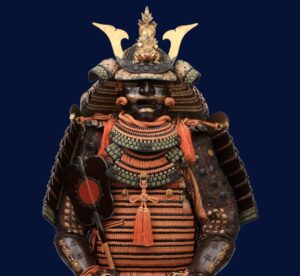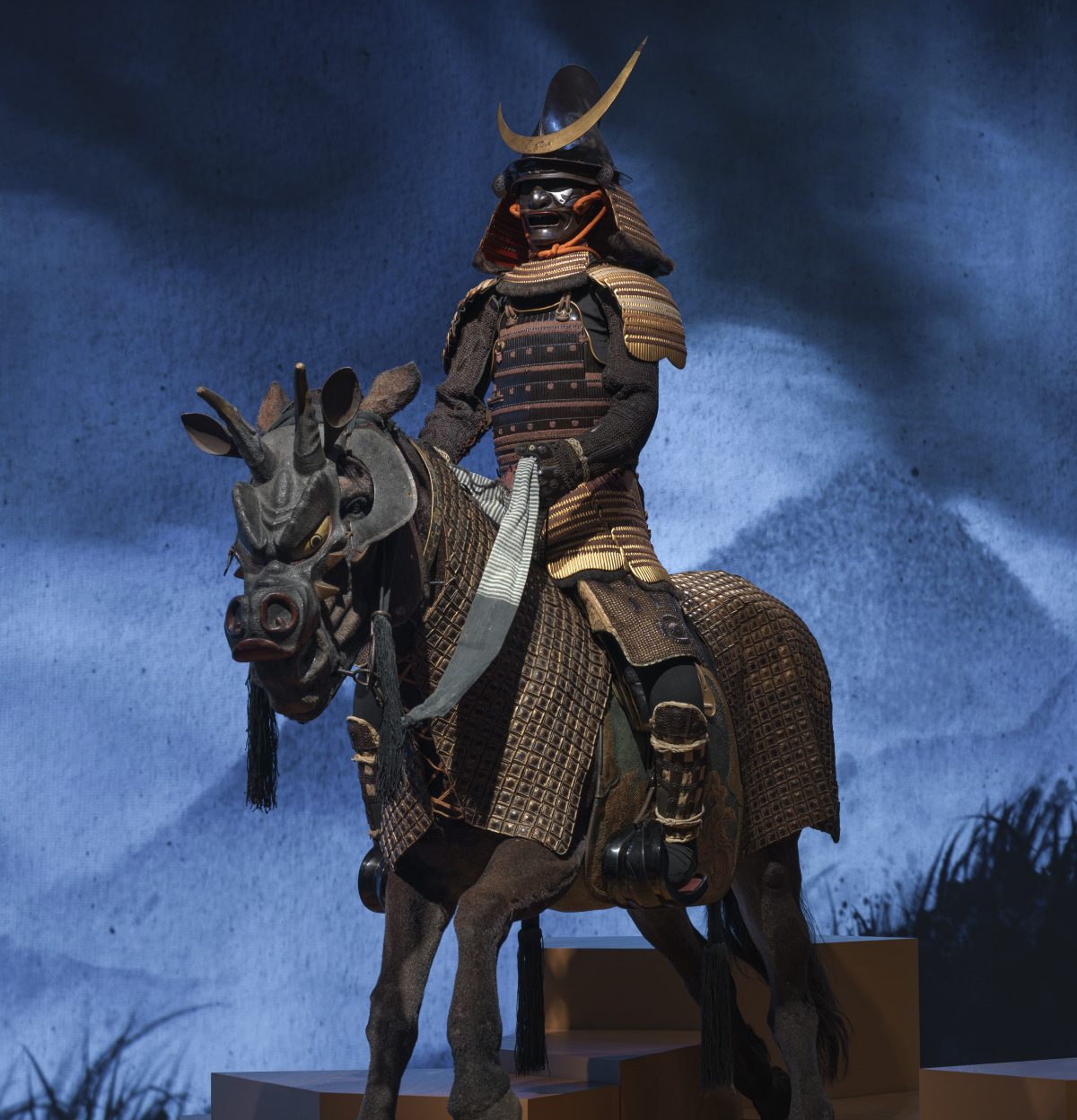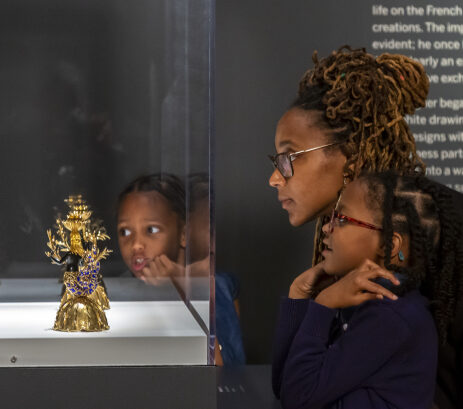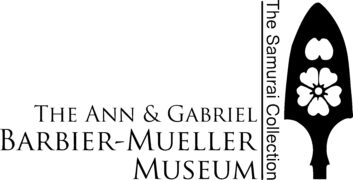
Exhibition Activities for Families & Children
Explore Samurai Armor from the Collection of Ann and Gabriel Barbier-Mueller using this resource which provides prompts for careful looking, and discussion of the objects featured in the exhibition.
ABOUT THE EXHIBITION
The art, armor and arms (or weapons) featured in this exhibition were owned by Japanese samurai. The samurai, which means “those who serve”, were hired by wealthy landowners to protect their land by battling with other samurai in Japan hundreds of years ago. You’ll see examples of the armor they wore to protect themselves, the weapons they used to fight with, and images of battles.
Fast Facts!
More than 160 objects in the exhibition including…
17 full suits of armor
42 helmets
15 weapons
That’s a lot to see! Use this guide to find key works throughout the galleries that tell the story of the samurai.

Activities for Exploring the Exhibition
Search through the exhibition to find these items owned and worn by the samurai. The cards below appear chronologically so keep your eyes open and when you find a work, tap the card to flip it–on the back you’ll find more information about the artwork and a question or activity to help you explore further.
What symbols can you find on this armor? Do you see an animal figure in the center of the helmet? It is a lion. Lions were viewed as protectors and symbolized strength, both of which were important qualities for samurai. What animal would you choose as a symbol and why?
Based on what you see in this scene, what is happening? What might happen next? How will the story end?
Think about how many separate pieces are combined to make it. Can you imagine wearing this? What would it feel like? How would you feel wearing it?
Wondering how a samurai put a suit of armor on? Look for the step-by-step drawing nearby!
How has the mask's artist made the horse’s face scary? Do you see the horns and the bulging eyes and flared eyebrows? These features might remind you of a mythical dragon. Dragons represented power, courage, and wisdom to the samurai.
Look for horses in battle in the next room!
AFTER YOUR VISIT TO THE EXHIBITION…
Take a break. Sit in the museum’s sculpture garden or café to share a snack and think about the art you have seen today. Take time to reflect on what you noticed, felt, or thought and share your reflections with someone you came with or write down your own thoughts.
Explore the permanent collection of East Asian Art on the 2nd floor of the museum. Did you know that VMFA also has a suit of Samurai armor? It is not on view right now, but you can learn about it in the Samurai Art in Depth digital resource.
Visit the Interactive Family Lounge on Level 1.

This exhibition is organized by The Ann & Gabriel Barbier-Mueller Museum, Dallas.

Educational materials for Samurai Armor from the Collection of Ann and Gabriel Barbier-Mueller are generously supported by the William R. Kenan, Jr. Charitable Trust.
Images (in order they appear on the page)
Nimaitachidō tōsei gusoku armor, Muromachi period, ca. 1400 (helmet bowl); mid-Edo period, 18th century (armor), Attributed: Myōchin Yoshimichi (helmet bowl); Myōchin Munenori (armor), iron, shakudō, lacing, silver, wood, gold, brocade, fur, bronze, brass, leather. © The Ann & Gabriel Barbier-Mueller Museum, Dallas. Photo: Brad Flowers
The Competition to Be First at Uji River, Japan, early 18th century, Six-panel folding screen, ink, color, and gold on paper. © The Ann & Gabriel Barbier-Mueller Museum, Dallas. Photo: Brad Flowers.
Armor of Warabe Type for a Child, 19th century, Iron, lacquer, gold, wood, lacing, wood, and fabric, © The Ann & Gabriel Barbier-Mueller Museum, Dallas. Photo: Brad Flowers.
Ridged helmet, (Sujibachi kabuto), Late Muromachi to mid Edo period, 16th–mid-18th century, Iron, lacing, fur, gold, shakudō, bronze, leather, © The Ann & Gabriel Barbier-Mueller Museum, Dallas, Photo: Studio Ferrazzini Bouchet Photography, Geneva
Tachi‑type Sword (efu no tachi), 1660–70, Yokoyama Sukesada (Japanese, active 17th century), steel, bronze, stingray skin, wood, lacquer, gold, © The Ann & Gabriel Barbier-Mueller Museum, Dallas, Photo: Brad Flowers
Horse Mask (bamen), 19th century, leather, metal, lacquer © The Ann & Gabriel Barbier-Mueller Museum, Dallas, Photo: Brad Flowers